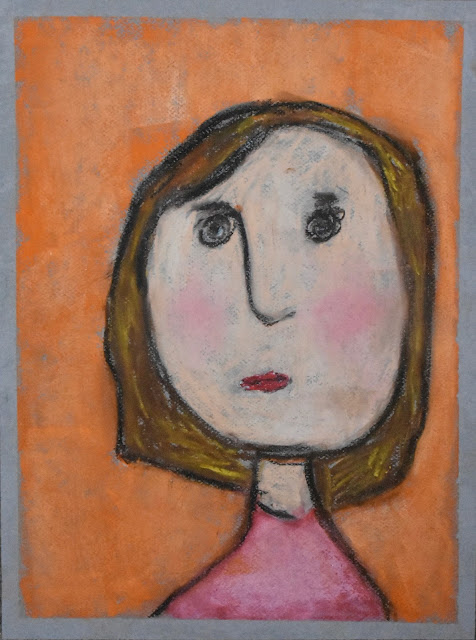And I'm not above bribing to hear children sing my praises!
I decided to have the K-Grade 3 class work on observational drawing. Gingerbread men seemed like the logical choice given we are now officially into the holiday season.
We started by doing a couple of warm up exercises. First I had the students create a large continuous line drawing using the blind contour method. Giggles ensued at the weird gingerbread men drawings created when they couldn't see their papers while drawing.
grade 1
Each child had their permanent black marker poked through a paper plate so they couldn't see the lines they were drawing.
They then created line drawings using their non dominant hand.
grade 2
And finally I had them create a quick drawing using a tonal view finder where they just colored the darks they saw in their cookies before adding the lines.
grade 2
Then we got down to business, pulled out three sheets of watercolor paper and began final drawings.
First they drew their gingerbread men whole. The young artist did careful looking to make sure they captured all the details along with the darks and lights.
grade 2
Then I asked them to take a bite.
Only one bite.
Anywhere they wanted on the cookie.
Then painfully they put the cookie back down without taking another bite and drew it again.
grade 2
They quickly caught onto the drill and were happy to hear they could now eat the entire cookie. I asked them to make sure they left all the crumbs on the paper towel they were using to place the cookie on while observing so they could draw what was left. I also told them they were welcome to leave a bit of the cookie to draw if they wanted.
The choice was theirs.
And then the children did their final sequence drawing and if they had any cookie left promptly ate it.
grade 1
At this point I gave them some graphite pencils that activate with water. I asked them to again draw in the dark areas of their cookies (using the lone surviving cookie to observe lights, darks and details)
The children didn't realize the pencil activated with water until I handed out some jugs of water and paintbrushes and asked them to go over their lines. I love surprising them sometimes.
I then placed out colored pencils and water-based markers to add color to their drawings. Again they had the opportunity to paint the markers with water to create a watercolor effect.
When they had finished adding the color I put out a bit of white paint for them to go back and add the icing and then they added some black pencil lines to bring back any details they wanted.
Finally using the colored markers one last time, they added back the color to the candies and sprinkles.
I mounted their drawings in sequence onto one piece of paper as a warning to all gingerbread men this holiday season to be diligent and to never forget.....
Run, run as fast as you can cause if you don't this is what happens when a child catches the gingerbread man.
























































